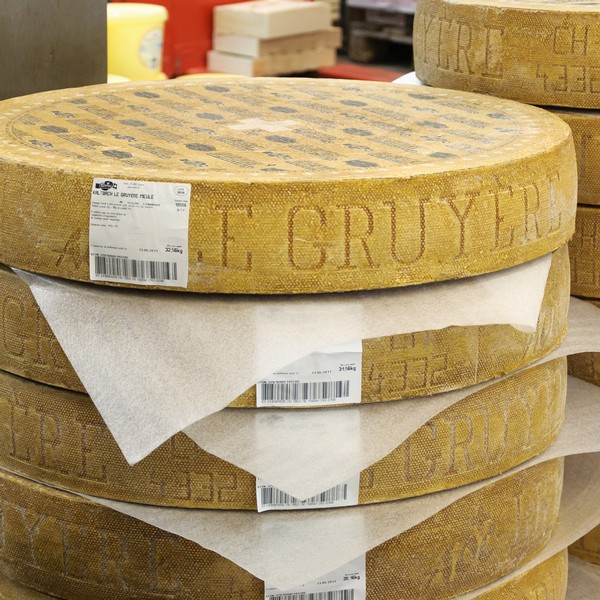Gruyere Cheese

Our step-by-step Gruyere Cheese recipe ensures that you create a delicious and perfectly textured cheese with confidence and ease.
Marthinus StrydomThe Story
Gruyere cheese has a long and rich history that dates back to the Middle Ages. The cheese originated in the canton of Fribourg in western Switzerland, in the region surrounding the town of Gruyeres.
The first recorded mention of Gruyere cheese dates back to 1115, when a monastery in the area received a donation of cheese from a local count. By the 14th century, Gruyere cheese had become a significant export of the region, with cheese being produced on a large scale and sold in markets throughout Switzerland.
In the centuries that followed, Gruyere cheese continued to be a popular and important product in Switzerland, with cheese-making techniques and traditions passed down from generation to generation. The cheese gained international recognition in the 19th century, when Swiss immigrants brought their cheese-making skills to countries such as France and the United States.
Today, Gruyere cheese is still produced using traditional methods, with milk from local cows that graze in the alpine meadows of the region. The cheese is aged for several months, during which time it develops its distinctive nutty, slightly sweet flavor and creamy texture.
Gruyere cheese remains a popular and highly prized cheese around the world, used in a variety of dishes and enjoyed on its own. It has also been granted Protected Designation of Origin (PDO) status by the European Union, recognizing the unique qualities and traditional production methods of this beloved cheese.

Subscripe to my Facebook page.
Subscripe to my Youtube channel.
© All recipes are copyright protected by TheCultureCook.com unless the recipe was adapated from another source. All recipes are uniquely crafted and adapted by TheCultureCook.com. Copyright of some or all of the text reside with the original author.
Ingredients
Method
- Warm the milk to 32°C or 90°F.
- Add the thermophilic culture and stir well.
- Cover the milk and let it rehydrate for about 5 minutes.
- Stir well.
- Cover the milk and let it ripen for about 10 minutes.
- Add the diluted calcium chloride and stir well.
- Add the diluted Rennet and let it set for an additional 45 minutes to 1 hour, or until a clean break is achieved.
- Cut the curd into 1cm cubes and let it rest for 10 minutes.
- Stir the curd with a whisk to cut it further, resulting in pieces slightly larger than grains of rice.
- Gradually heat the curd to 46°C or 115°F, stirring every 5 minutes and maintaining a slow temperature increase over a 1 hour period.
- Let the curd settle for 5 minutes before draining off the whey up to the level of the curds.
- Carefully move the curds onto a cloth-lined mold and press them at 11kgs for 1 hour.
- Flip and redress.
- Press the curds again at 22kg for 12 hours or overnight.
- Remove the cheese from the mold and soak it in saturated brine for 10 hours, turning it at 6 hours.
- Pat the cheese dry and air dry it at 10°C for 2 weeks or until the surface is dry.
- Rub salt on the cheese and transfer it to a cheese cave, washing it with brine 3 to 4 times a week for the first 2 to 3 months to control mold growth.
